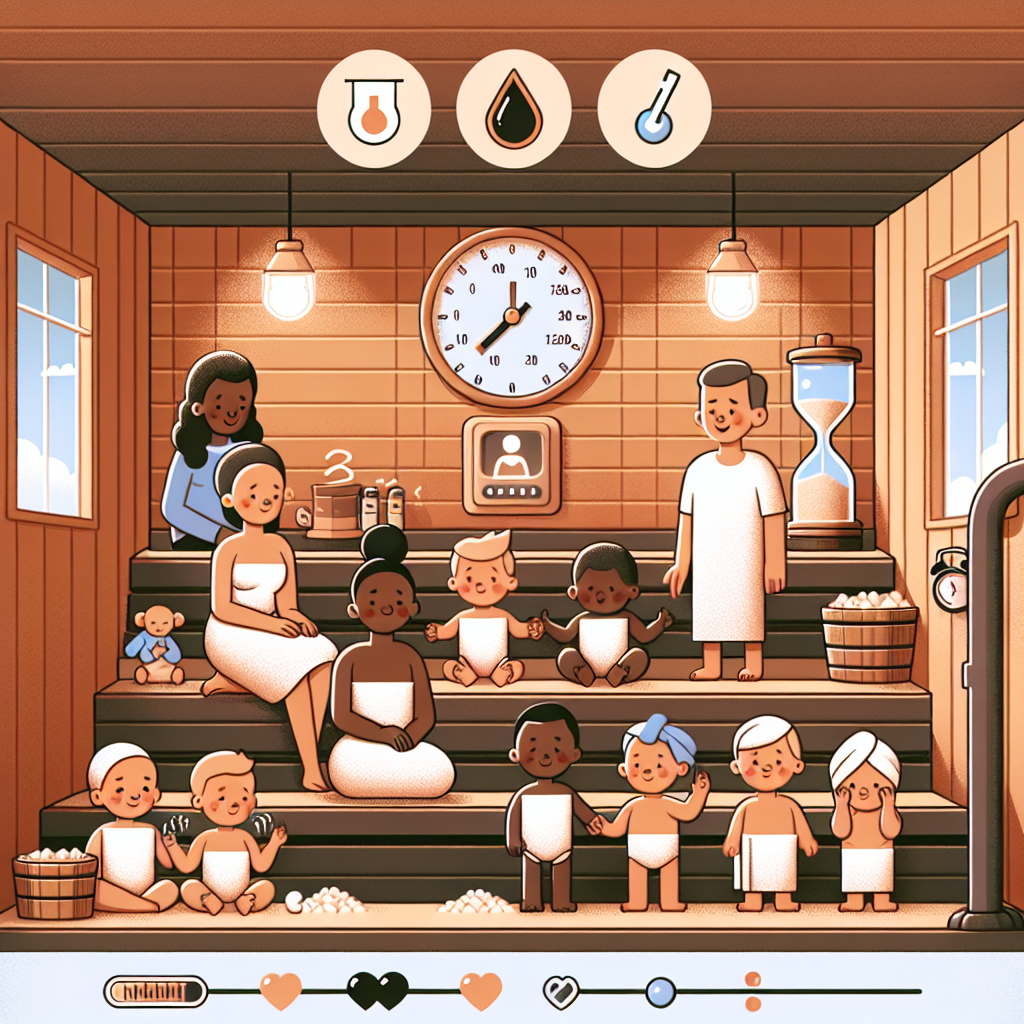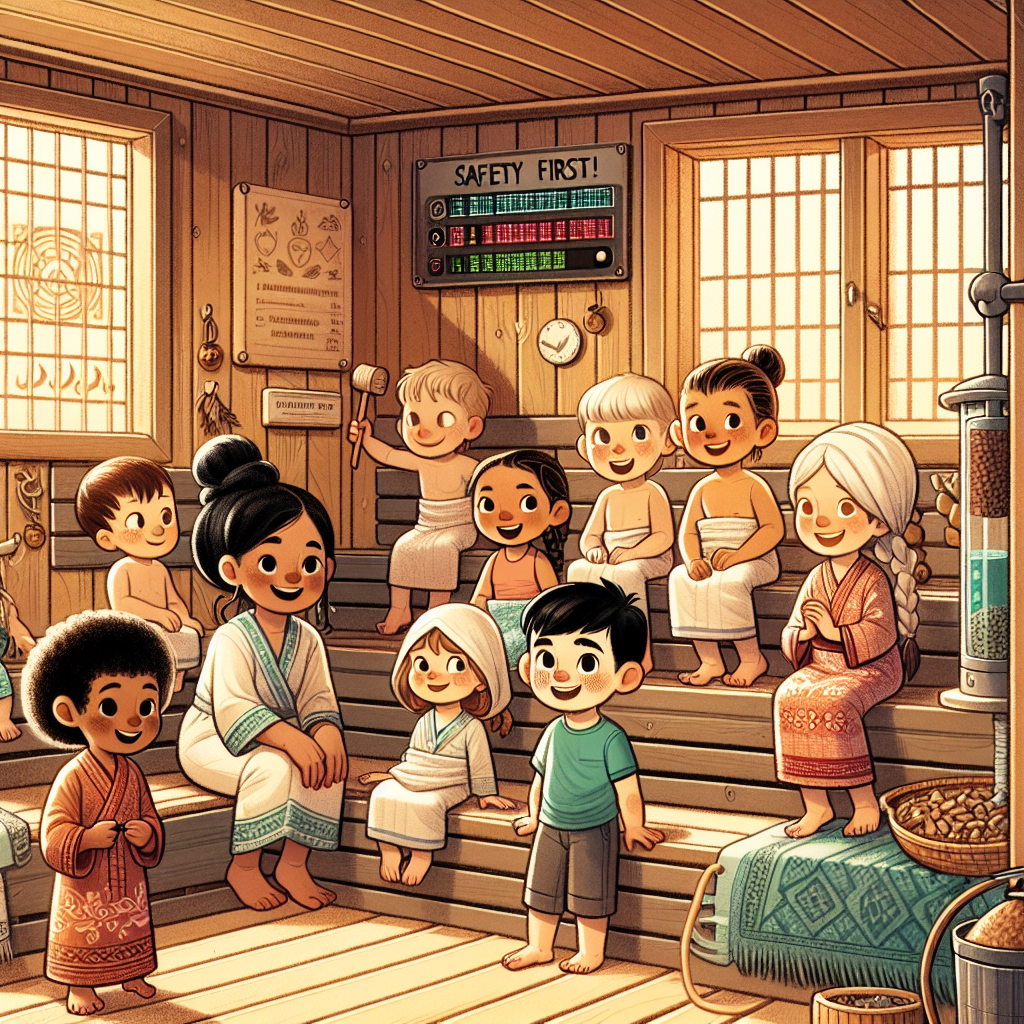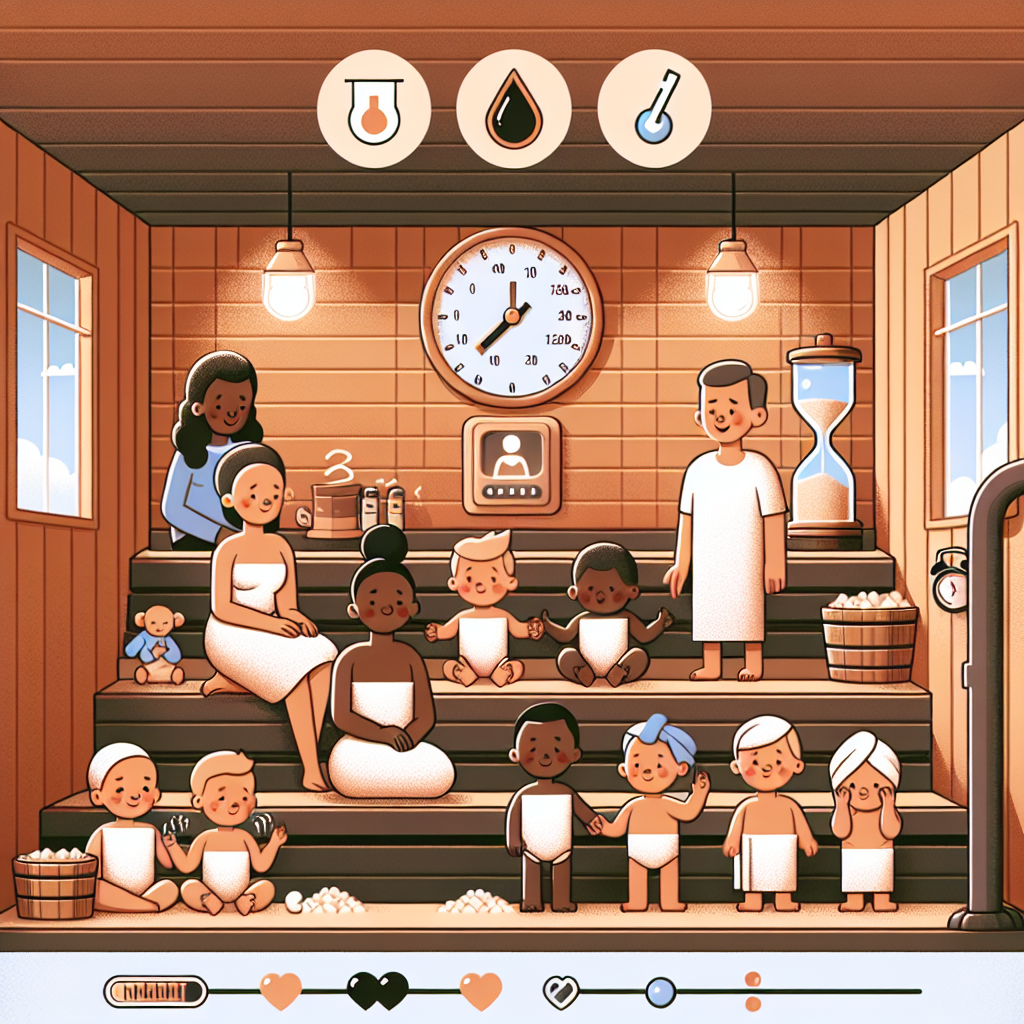Did you know that saunas offer numerous health benefits for adults? But what about children? Can they also take advantage of this relaxing and rejuvenating experience? The answer is yes, but with a few important considerations. In this article, we will explore the potential benefits and risks of children using saunas, as well as provide you with some valuable tips to ensure a safe and enjoyable sauna experience for your little ones. So, if you’ve been wondering whether children can use saunas, keep reading to find out all you need to know!
Safety Considerations
When it comes to children using saunas, there are several safety considerations that should be taken into account to ensure their well-being. It is important to consider age restrictions, temperature and time limitations, supervision, hydration, and any existing medical conditions.
Age Restrictions
Saunas are typically not recommended for children under the age of six. This is because younger children have a harder time regulating their body temperature and may be more prone to overheating. Furthermore, their immune systems are still developing, and exposing them to high temperatures may put unnecessary stress on their bodies.
Temperature and Time Limitations
Even for older children, it is important to be mindful of the temperature and time spent in the sauna. It is recommended that children should not stay in the sauna for longer than 10 to 15 minutes at a time. Additionally, the temperature should be kept at a moderate level to prevent overheating.
Supervision
Children should never be left unattended in a sauna. It is crucial to have a responsible adult present at all times to ensure their safety. This adult can monitor the child’s well-being and take immediate action if any signs of distress or discomfort arise.
Hydration
It is vital to keep children hydrated before, during, and after their sauna session. The high temperatures in the sauna can cause excessive sweating, leading to fluid loss. Encourage your child to drink plenty of water or a sports drink to replenish their fluids.
Medical Conditions
If your child has any existing medical conditions, it is crucial to consult with a healthcare professional before allowing them to use a sauna. Certain conditions, such as heart problems or respiratory issues, may make saunas unsafe for children. Always prioritize your child’s health and seek medical advice if you have any concerns.
Potential Benefits
While there are some safety considerations to keep in mind, there are also potential benefits that children can experience from using saunas. These benefits include improved circulation, relaxation and stress relief, clearing sinuses, and detoxification.
Improved Circulation
The heat from the sauna causes blood vessels to dilate, leading to improved circulation throughout the body. This can be particularly beneficial for children who may have circulation issues or muscle tension. Improved circulation can promote healing, reduce muscle soreness, and enhance overall well-being.
Relaxation and Stress Relief
Saunas are known for their ability to promote relaxation and relieve stress. Children, just like adults, can experience stress and benefit from a calming sauna session. The quiet, warm environment of a sauna encourages a sense of tranquility, providing a much-needed break from the demands of daily life.
Clearing Sinuses
Steam and heat from saunas can help clear nasal passages and alleviate congestion. This can be especially beneficial for children who suffer from allergies or colds. The sauna’s warmth can soothe irritated airways, allowing your child to breathe easier and find relief from sinus discomfort.
Detoxification
Saunas promote the process of sweating, which can aid in detoxification. Sweat helps eliminate toxins from the body and can contribute to a healthier immune system. While children may not have the same level of toxin exposure as adults, a sauna session can still support their natural detoxification process.

Possible Risks
Although saunas offer potential benefits, it’s important to be aware of the possible risks involved when children use saunas. These risks include overheating, dehydration, skin sensitivity, and asthma and respiratory issues.
Overheating
Children are more susceptible to overheating due to their smaller body size and less developed internal thermoregulation systems. It is crucial to monitor their time in the sauna and ensure they are not overheating. Signs of overheating may include dizziness, nausea, headache, or a rapid heartbeat. If any of these symptoms occur, it is essential to remove the child from the sauna and cool them down immediately.
Dehydration
The high temperatures in the sauna can lead to excessive sweating and fluid loss, increasing the risk of dehydration. It is important to remind your child to drink fluids before, during, and after their sauna session to maintain proper hydration levels. Encourage them to take regular sips of water or a sports drink to replenish lost fluids.
Skin Sensitivity
Children may have more sensitive skin compared to adults, and the heat and humidity in the sauna can potentially cause skin irritation. It is advisable to check your child’s skin for any signs of redness, itching, or discomfort after their sauna session. If any skin issues arise, it is best to discontinue sauna use until consulting with a healthcare professional.
Asthma and Respiratory Issues
Children with asthma or other respiratory conditions may be more at risk when using saunas. The heat and moisture in the sauna can trigger asthma symptoms or respiratory distress. It is crucial to consult with your child’s healthcare provider to determine if sauna use is safe for them. They may recommend alternative options or provide guidance on how to minimize risks.
Alternatives for Children
If saunas are not suitable or available for your child, there are alternative options that can provide similar benefits. These alternatives include steam rooms, warm baths, hot showers, and outdoor activities.
Steam Rooms
Steam rooms offer a humid environment similar to a sauna but with lower temperatures. This can be a more suitable option for children who may be at risk of overheating in a traditional sauna. Make sure to follow the same safety considerations and time limitations as with saunas.
Warm Baths
Taking a warm bath can also offer relaxation and some of the benefits of a sauna. Adding Epsom salts or essential oils to the bathwater can enhance the experience. Remember to supervise your child in the bath and ensure an appropriate water temperature to avoid scalding.
Hot Showers
Hot showers can help promote relaxation and provide a steamy environment that clears sinuses. Encourage your child to take slow, deep breaths in the steamy shower to inhale the beneficial vapor. Always supervise your child in the shower to ensure their safety.
Outdoor Activities
Engaging in outdoor activities can also provide relaxation and stress relief. Spending time in nature, breathing in fresh air, and being physically active can have similar benefits to those provided by saunas. Encourage your child to participate in activities such as hiking, biking, or playing sports to promote their overall well-being.

Sauna Etiquette for Children
If your child is allowed to use a sauna, it is important to teach them proper sauna etiquette to ensure everyone’s enjoyment and safety.
Shower Before Entering
Before entering the sauna, instruct your child to take a shower to remove any oils, lotions, or dirt from their skin. This will help maintain cleanliness and prevent the sauna from becoming dirty.
Limiting Sauna Time
Emphasize the importance of limiting sauna time to the recommended duration. Children should only spend 10 to 15 minutes in the sauna to avoid overheating or dehydration. Set a timer or use a clock to keep track of the time and ensure they do not exceed the limit.
Using Towels on Seats
Instruct your child to always sit on a towel or use a towel as a barrier between their skin and the sauna bench. This will help prevent skin irritation and keep the sauna clean for others to use.
Avoid Extremely Hot Spots
Teach your child to be mindful of extremely hot spots within the sauna and avoid sitting directly on or near them. These hot spots can increase the risk of burns or discomfort. Encourage them to find a comfortable spot away from the hottest areas.
Consulting a Physician
Before allowing your child to use a sauna, it is advisable to consult with their physician. A healthcare professional can assess their overall health, consider age and developmental factors, and provide guidance based on specific medical conditions.
Overall Health Assessment
A physician will evaluate your child’s overall health, taking into account factors such as their immune system, cardiovascular health, and respiratory function. This assessment will help determine if sauna use is suitable for your child or if alternatives should be considered.
Age and Developmental Factors
Children’s bodies are still growing and developing, and their physiological responses to heat may vary. A healthcare professional can consider age and developmental factors to determine if using a sauna is safe for your child. They may recommend waiting until your child reaches a certain age or developmental milestone.
Specific Medical Conditions
If your child has any specific medical conditions, it is essential to discuss them with their healthcare provider. Certain conditions may make using a sauna risky or potentially harmful. Your child’s physician can provide individualized advice and guidance based on their unique medical needs.
Conclusion
While saunas can offer potential benefits for children, it is important to prioritize their safety and well-being. Always consider the safety considerations, potential benefits, and possible risks before allowing your child to use a sauna. If saunas are not suitable, there are alternative options available that can provide similar benefits. Remember to consult with your child’s healthcare provider to ensure sauna use is safe for them based on their age, developmental stage, and any existing medical conditions. By taking the necessary precautions and following proper etiquette, you can create a safe and enjoyable sauna experience for your child.

